Laser eye surgery at EuromedicaLife®
EuromedicaLife® offers a comprehensive range of ophthalmology services and is managed by a highly qualified team of internationally recognized ophthalmologists. Our specialists are experts in the field of ophthalmology and, in addition to a wide range of eye treatments, have particular specializations in laser eye surgery, including laser vision correction, and cataract surgery.

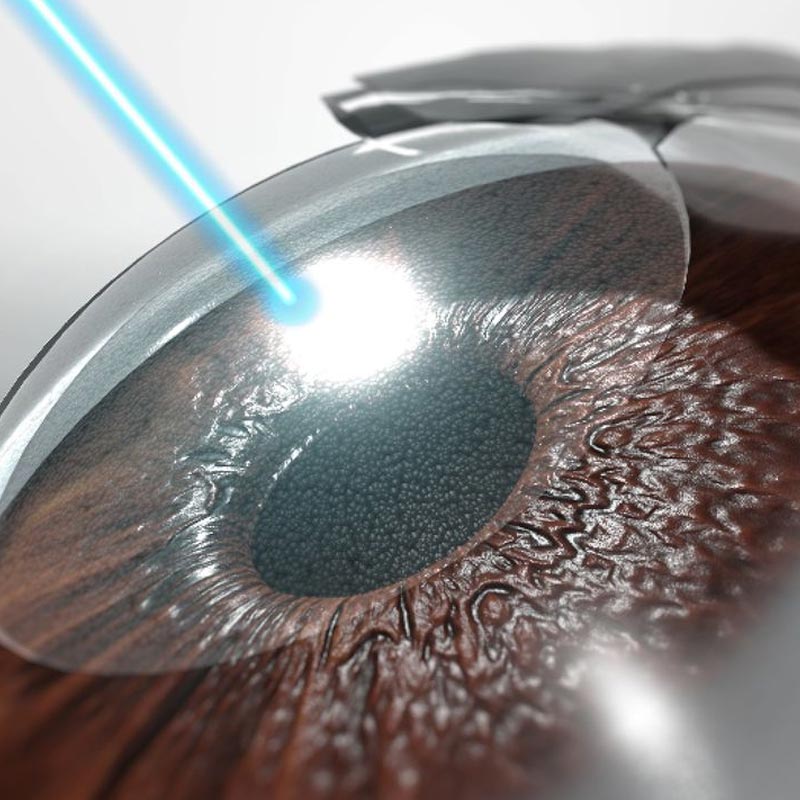
Procedure for laser eye surgery
Laser eye surgery, also known as laser vision correction, uses a laser to change the shape of the eye’s cornea, allowing people with poor vision to achieve improved focusing.
Problems that laser eye surgery can solve
Laser eye surgery can help with a variety of vision problems, including:
-
Nearsightedness (myopia): People with nearsightedness have difficulty seeing distant objects clearly. Laser eye surgery can reshape the cornea to better focus incoming light, resulting in improved distance vision.
-
Farsightedness (hyperopia): People with farsightedness have difficulty seeing close objects clearly. Laser eye surgery can shape the cornea so that it better focuses the incoming light and improves close vision.
-
Astigmatism: Astigmatism occurs when the cornea is irregularly shaped, which can cause distorted vision both near and far. Laser eye surgery can correct the irregular shape of the cornea, improving vision.
-
Presbyopia: Presbyopia occurs when the lens of the eye loses elasticity with age, making it difficult to read and see up close. Although laser eye surgery cannot completely correct presbyopia, there are several procedures such as monovision that can help alleviate the vision problems.
Laser eye surgery can provide a long-term solution for many people to correct their vision problems and improve their quality of life. However, it is important to have a thorough examination by an eye doctor before surgery to determine if you are a good candidate for the treatment.
Laser eye surgery methods, procedures & healing process
The three most common laser eye procedures are LASIK, SMILE and PRK:
- LASIK (Laser-Assisted In Situ Keratomileusis): LASIK involves creating a thin flap from the cornea and folding it back. An excimer laser is then used to correct the shape of the underlying corneal layer. The flap is then put back in place. LASIK is a popular method for treating nearsightedness, farsightedness and astigmatism.
- SMILE (Small Incision Lenticule Extraction): SMILE involves making a small, circular incision in the cornea through which a piece of tissue (lenticule) is removed. This is done without creating a flap. The excimer laser is then used to correct the shape of the remaining corneal layer. SMILE is a gentle method of treating myopia.
- PRK (Photorefractive Keratectomy): PRK removes the top layer of the cornea (epithelium) without creating a flap. The excimer laser is then used to correct the shape of the underlying corneal layer. The top layer of the cornea then regenerates itself. PRK is often used when the cornea is thin or there are other contraindications to LASIK.
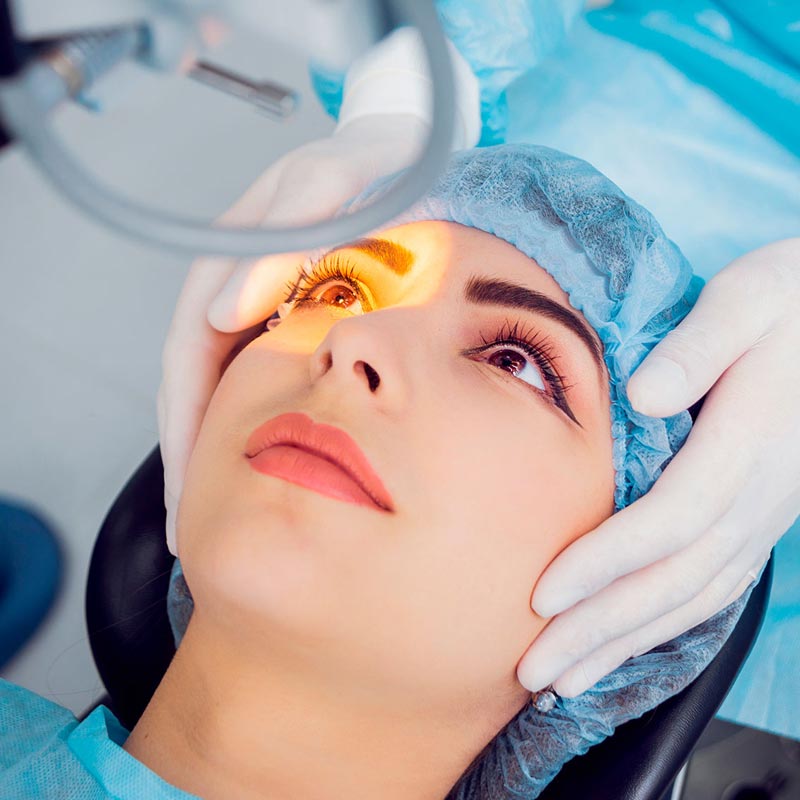
Laser eye treatment procedures
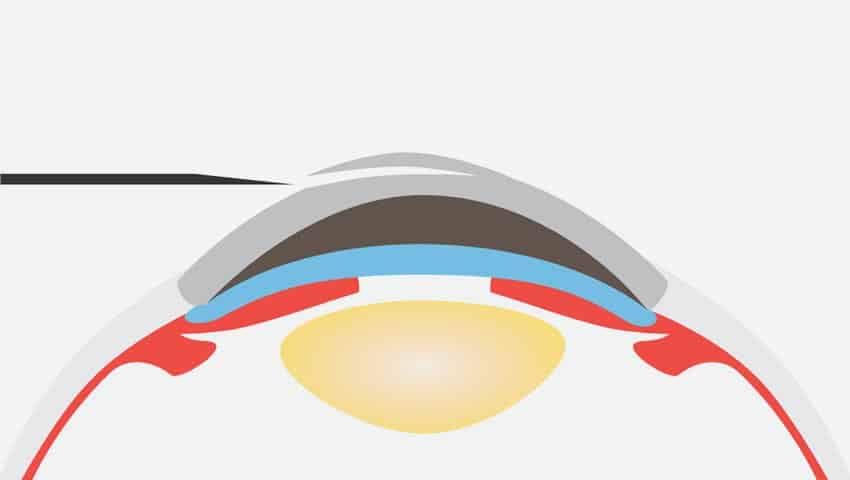
1. Flap creation
Flap creation involves creating a thinly cut flap from the outer layer of the cornea. This flap is carefully lifted to allow access to the underlying corneal layer.

2. Preparation before laser eye treatment
Flap creation involves creating a thinly cut flap from the outer layer of the cornea. This flap is carefully lifted to allow access to the underlying corneal layer.

3. Laser eye treatment
During laser treatment, a high-precision laser is used to sculpt the shape of the cornea and correct the refractive error. The laser beam is directed at the cornea in a controlled and targeted manner to remove or reshape tiny amounts of tissue, resulting in improved vision correction.

4. Reattachment of the flap
After the laser treatment is completed, the previously created flap is carefully placed back in its original place on the cornea. This step is crucial for the healing process and stabilization of the treated areas. The flap is carefully positioned and smoothed to ensure proper wound healing.
Each of these methods has its own advantages and disadvantages, and choosing the most appropriate method depends on several factors such as individual eye anatomy, the type of vision disorder, and the patient’s personal preferences. It is important to seek advice from an experienced ophthalmologist to determine the best option for your specific situation.
Recovery process
As far as the recovery process is concerned, most patients can return to their daily routine and work the next day after LASIK and SMILE laser eye surgery! After the PRK procedure, patients cannot return to their daily routine for about 3 days. We recommend that you apply the recommended eye drops after surgery to assist the eye’s healing process and achieve the best possible refractive result. Post-operative appointments are scheduled 1 day, 1 month and 1 year after laser eye surgery. After PRK, this may vary depending on the healing process.
Cataract surgery & healing process
-
Patient preparation: Before surgery, the ophthalmologist will perform a thorough examination to evaluate the condition of the eyes and plan the optimal treatment. This may include measuring the intraocular pressure, examining the cornea, and determining the appropriate intraocular lens (IOL).
-
Anesthesia: Cataract surgery is usually performed under local anesthesia to ensure that the patient does not feel any pain during the procedure. In some cases, intravenous sedation may also be given to relax the patient.
-
Access to the lens: A tiny incision is made in the cornea to access the lens. This can be done either manually with a scalpel or with a femtosecond laser.
-
Removal of the clouded lens: The clouded lens is removed either by phacoemulsification or by manual extraction. In phacoemulsification, the lens is broken into small fragments using ultrasonic energy and then suctioned out.
-
Intraocular lens (IOL) implantation: After the cloudy lens is removed, a clear plastic lens called an IOL is placed in the same place to restore vision. The IOL can be a monofocal lens that is fixed for one distance or a multifocal lens that covers different distances.
-
Completion of surgery: After the IOL is implanted, the incision in the cornea is closed either with a self-sealing technique or with fine sutures. The surgery ends with the application of a bandage or eye ointment to protect the eye.
Most patients experience a significant improvement in their vision after cataract surgery and are often able to resume daily activities the next day. However, it is important to follow your doctor’s aftercare instructions to ensure a quick recovery and optimal results.
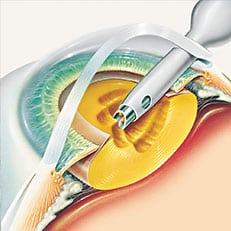
1. Lens extraction
The eye is opened through an incision less than 2.5 mm wide and the front lens capsule is removed. This transparent lens capsule is only a few thousand millimeters thick and the remaining capsular bag serves as a holder for the new artificial lens. The clouded lens (cataract) is then suctioned out using an ultrasound pen.
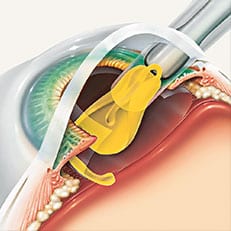
2. Implantation of a new lens
In the next step, the new artificial lens (aspheric, toric or multifocal) is implanted. The artificial lens is folded by the surgeon and inserted through the narrow tunnel into the capsular bag. The wound usually does not need to be sutured because the incision is very small (less than 3 mm) and is designed to close itself after the operation.
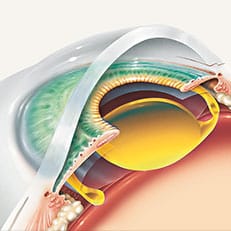
3. Completion of cataract surgery
After the IOL is implanted, the incision in the cornea is closed with either a self-sealing device or fine sutures. The operation ends with the application of a bandage or eye ointment to protect the eye.
Recovery process
The recovery process after cataract surgery varies from person to person, but in general the following stages can be expected:
-
Immediately after surgery: Immediately after cataract surgery, mild discomfort such as burning, itching, watering or a foreign body sensation in the eye may occur. This is usually mild and subsides in the first few hours after surgery. It is important that the patient rests after surgery and avoids any physical exertion.
-
First days after surgery: During the first few days after surgery, vision may be temporarily blurred while the eye recovers from surgery. The doctor will usually prescribe eye drops to reduce inflammation and lubricate the eye. It is important to use the prescribed eye drops regularly and according to the doctor’s instructions to promote good healing.
-
First week after surgery: During the first week after cataract surgery, most patients can resume their daily activities, but it is recommended to avoid heavy lifting and strenuous physical activity. It is also important to protect the eye from water and dust by being careful when showering or bathing and wearing protective goggles if necessary.
-
Long-term recovery process: Final vision may take several weeks to months to fully stabilize and improve. During this time, the patient will have regular follow-up visits with the ophthalmologist to ensure that the eye is healing properly and vision is developing as expected. The doctor will monitor the recovery process and make adjustments to the treatment as needed.
Throughout the recovery process, it is important to report any signs of complications such as persistent pain, increasing redness or swelling, sudden vision deterioration, or sensitivity to light to the doctor immediately. By following the doctor’s instructions and regular follow-up care, a successful recovery after cataract surgery can be achieved.